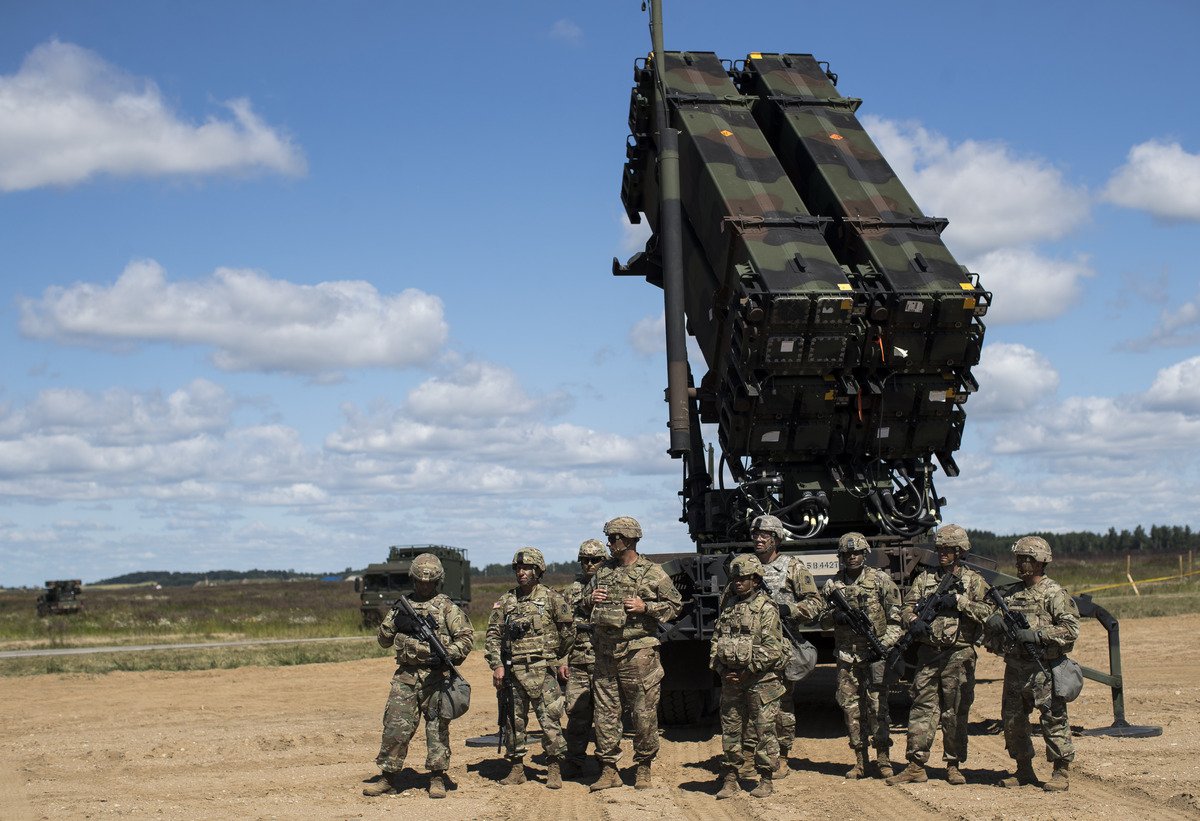The U.S. Army has dropped plans to develop new interceptor missiles for its vaunted Patriot air defense systems, as demand for reliable air defense systems and the munitions to keep them working increases.
The military had planned for new next-generation interceptor missiles for the Patriot system, known as Lower-Tier Future Interceptors, but is “not going to move forward” with the development, said Major General Frank Lozano, the head of the Army’s office for developing missile and space capabilities.
The Army will continue upgrading the latest version of missiles currently fired by Patriot systems, Lozano told Defense News.
The Patriot ground-based missile defense system is one of the U.S.’s most advanced air defense systems. It is considered the gold standard, but there are relatively few of them.

Members of the U.S. 10th Army Air and Missile Defense Command stand next to a Patriot surface-to-air missile battery during a NATO exercise at an air base in Lithuania on July 20, 2017. The U.S. Army has dropped plans to develop new interceptor missiles for its vaunted Patriot air defense systems.
AP Photo/Mindaugas Kulbis
The Raytheon-made system has been upgraded several times since it was introduced decades ago. It is designed to take down ballistic and cruise missiles as well as drones and aircraft.
Patriot batteries typically consist of missiles, launchers, radar sets, power generators, control stations and antenna masts.
The PAC-3 Missile Segment Enhancement, or MSE, is the newest Patriot missile and works by physically knocking out an incoming threat with kinetic energy.
The PAC-3 MSE is “probably the best air defense missile in the world,” Lozano said. The Army will “continue to advance that capability so that it can remain relevant against the evolving threats.”
Each interceptor missile for a system like the Patriot typically costs several million dollars.
Lozano had said in October 2023 that the Army had decided it was “probably about time that we start looking for a next-generation interceptor.”
“These interceptors, they take a while to not only create but they also take a while to test,” Lozano added, meaning they might not be used by the military until the late 2030s.
The Army was getting a clearer picture of the PAC-3 MSE’s capabilities from reports coming out of Ukraine, Lozano said last year. The Patriots have been near the very top of Ukraine’s wish list of military aid from its Western allies, more than two and a half years into its war with Russia, in which it struggled to fend off heavy Russian aerial bombardment.
Kyiv has used its Patriots to take out a slew of Russian aircraft, according to Ukraine’s military. The systems are credited with intercepting a number of Russia’s supposedly unstoppable Kinzhal missiles, which the Kremlin has described as hypersonic weapons.
Russia has periodically said it has destroyed or damaged components belonging to the handful of Patriot systems Ukraine has received. The U.S. has provided two of those Patriot batteries.
In July, Russia said it had struck two Patriot launchers with Iskander-M missiles, which Ukraine said were decoys designed to waste Russian missile stocks. Kyiv’s air force acknowledged earlier this month that Moscow had struck parts of a Patriot battery in Ukraine’s Dnipropetrovsk region, which borders the eastern Donetsk region, where the fiercest clashes rage on.
Russia “only damaged a few pieces of equipment, not destroyed them,” in the strike, a spokesperson for Ukraine’s air force said without elaborating. “The same Patriot unit continues to perform tasks in the region.”
In late July, Tom Laliberty, the president of land and air defense systems at Raytheon, told Newsweek that it was speeding up production of its high-profile air defense systems, including those deployed in Ukraine and Israel, after demand for the systems more than doubled.
Since 2022, orders for the weapons across the board—from smaller systems to the large, long-range batteries such as Patriot—have increased 150 percent, Laliberty said.
The Patriot—designed originally for use against Soviet weapons—has “performed remarkably well” in Ukraine, Laliberty said.




